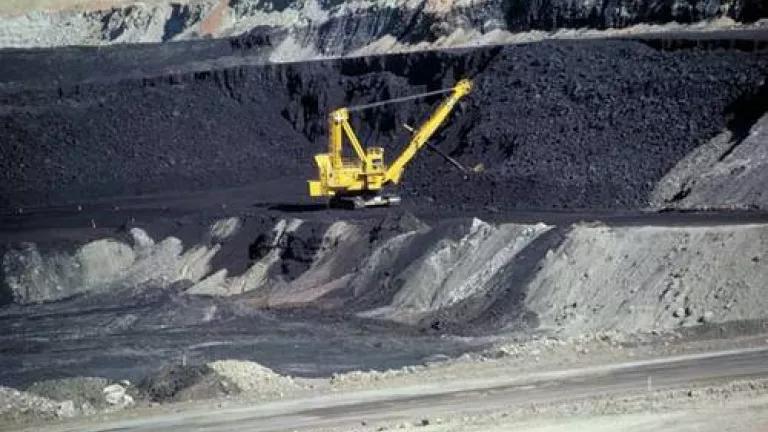Western Energy News Round-Up: Residential Energy Codes, Data Centers Run on Renewables, Fires Cost $1 Billion, Worst Drought in a Century and Drilling Limited Near Heritage Site

Western Energy News Round-Up is a periodic selection of news highlighting recent energy and environmental issues in the western United States.
August 15th through September 9th, 2013
Clean Energy:
Efficiency Advocates and Home Builders Seeing Eye to Eye
Late last month, twenty of the nation's largest home builders representing 40% of the single-family home building market joined together with two major efficiency advocacy organizations, NRDC and the Institute for Market Transformation, to support new residential energy codes that, if passed, could bring dramatic efficiency improvements to America's new housing stock. The new code cut energy use in new houses by 20 percent in the next two years.
(Green Tech Media, September 3, 2013)
These States Are Going to Become Green Energy Powerhouses
Renewable energy has gotten tantalizingly close to becoming competitive with conventional fossil fuels, and to help bridge the gap, more than 30 states have passed laws requiring energy companies to supply a minimum amount of power from green sources. And according to a new study, if renewable sources are built in the right places, they could compete against traditional power plants without subsidies down the road, turning states like California, Wyoming, Idaho, Arizona, Nevada and New Mexico into green energy powerhouses.
(The Atlantic Cities, August 29, 2013)
Arizona desert hosts world's largest 'net-zero energy' building
The new Phoenix regional office of DPR Construction has been officially certified as a "net zero energy" building by the International Living Future Institute (ILFI). It’s the largest building in the world to achieve net zero energy building certification through the institute to date. Design solutions include a "vampire” switch that cuts off 90 percent of plug loads, which would otherwise continue to draw power at night when the building is unoccupied.
(Sustainable Industries, August 13, 2013)
Boost from the sun could help gas power plants generate more electricity, run more cleanly
Researchers in Washington have developed a way to harness the heat of the sun to boost the efficiency of conventional power plants. The new technology allows a natural gas-fired plant to generate 25 percent more electricity from the same amount of fuel, and it also reduces greenhouse-gas emissions.
(Seattle Times, September 2, 2013)
Fossil Fuels:
Wyoming Ranks as Highest Energy Consuming State in America
As temperatures rise during summer months across the U.S., so does energy consumption and, especially, energy bills. Wyoming ranks as the highest energy-consuming state in America across the seasons.
(Huffington Post, August 22, 2013)
Coal mine in Wyoming (Photo courtesy of BLM)
Coal shoulder: BLM sells controversial coal mining lease, but no one’s buying
The Bureau of Land Management in Wyoming held a sale for the lease of 148 million tons of coal on public land in the Powder River Basin on August 22nd — and received not a single bid, a first in the state BLM’s history. Coal in this country is getting more difficult and costly to mine, domestic demand is falling, and Obama has directed EPA to crack down on emissions from coal-fired power plants. Even the coal industry’s longshot plan to stay profitable by pushing exports to Asia faces setbacks.
(Grist, August 22, 2013)
Data centers become battleground in war between fossil fuels, renewables
In investor reports and promotional efforts, utilities are increasingly touting their services to a lucrative growing customer base: cloud computing and data centers. The average square foot of a data center uses 100 to 200 times more electricity than does a square foot of a modern office building, increasing energy demand. But there is a strong debate over whether these energy-sucking centers will sustain the world's coal use. To date, five major cloud brands to be committed to be powered with 100 percent renewable, including Google, Facebook Inc., Apple Inc., Rackspace Inc. and Salesforce.com Inc.
(Governors' Wind Energy Coalition, August 21, 2013)
Utilities:
CA gives utilities new financial incentives to push energy efficiency
Utilities in California will be able to earn money when they persuade residents and businesses to add building upgrades that cut energy use, state regulators ruled yesterday. The California Public Utilities Commission unanimously approved up to $178 million for new incentives to promote energy efficiency in 2013-2014. The revised program offers the most rewards for efforts that create long-lasting energy savings, like adding insulation to a home or installing dual-pane windows.
(E&E News, September 6, 2013)
FERC rejects PacifiCorp plan to charge renewable resources more for reserves
FERC has rejected a PacifiCorp proposal to charge wind and other intermittent resources more for regulation and frequency response services than it does other customers. PacifiCorp currently charges all its transmission customers the same rate for generator regulation and frequency response service. Under the proposal, the utility would boost that rate to more than 8,000 times greater than the charge imposed on other generators. FERC found that "PacifiCorp has not demonstrated that its proposed methodology, including the data to support that methodology, is just and reasonable and not unduly discriminatory."
(SNL Financial, August 16, 2013)
California ratepayers get $750 million in energy crisis settlement
A Canadian power company will pay California electricity ratepayers $750 million to settle allegations that it manipulated the state's power market during the energy crisis of 2000 and 2001. Powerex Inc., a subsidiary of British Columbia Hydroelectric, which is owned by the provincial government was accused of gaming the California energy market by purchasing and exporting to Canada huge quantities of electricity and then selling it back to California at exorbitant prices. Once paid, the $750 million will be refunded by the Public Utilities Commission to customers of Southern California Edison Co., Pacific Gas & Electric Co., and San Diego Gas & Electric Co.
(LA Times, August 16, 2013)
Conservation:
BLM to limit drilling leases near Chaco, New Mexico
Federal land managers have proposed limiting the number of parcels to be leased for oil and natural gas development near the Chaco Culture National Historical Park in northwestern New Mexico. Critics were concerned development could harm archaeological and environmental resources at the World Heritage site.
(Albuquerque Journal, September 4, 2013)
Drought conditions impact a local restaurant in Denver, Colorado, August 20, 2013.

(Photo © Meredith Connolly)
Study: Colorado River drought will cut flow from Lake Powell
A federal Bureau of Reclamation study released Friday says the Colorado River’s worst drought in a century will force reduced water releases from Lake Powell that could affect agriculture, downstream business and hydroelectric power production. Groups urging conservation warned of drastic water cutbacks and severe economic implications. Water from Lake Powell flows through the Grand Canyon to Lake Mead, where levels are expected to drop eight feet next year, causing reduced deliveries to farms and water banks. Based on the projections, officials said shortages could trigger a 20 percent decrease in Arizona deliveries to agriculture.
(The Republic, August 17, 2013)
How Arizona and Colorado are rethinking energy vs. water
Because many of our energy sources gulp down huge volumes of water, it’s imperative that we break down the long-standing division between energy and water. Thermoelectric power plants -- such as coal, natural gas and nuclear -- in Arizona, Colorado, New Mexico, Nevada and Utah consumed an estimated 292 million gallons of water each day in 2005, roughly equal to the amount of water consumed by Denver, Phoenix and Albuquerque combined. Scientific models predict climate change will increase drought throughout the Southwest, placing greater stress on the region’s delicate water supply.
(GreenBiz.com, August 27, 2013)
Climate Change:
As big fires burn across the West, federal resources are stretched thin
With wildfires 11 Western states the National Interagency Fire Center upgraded to its highest level of preparedness, signaling that a majority of federal resources are deployed. NIFC has hit its top level five times in the past 10 years, the last time in 2008. Federal spending on firefighting efforts edged past the $1 billion mark.
(E&E, August 21, 2013)
Rim Fire becomes 3rd largest in California history
The Rim Fire burning in and around Yosemite National Park has now become the third largest wildfire in California history. The fire is now 246,350 acres, and remains 80 percent contained.
(San Jose Mercury, September 3, 2013)
Compiled by Meredith Connolly
